[Recent Entries][Archive][Friends][User Info]
January 21st, 2013
| January 21st, 2013 | |
|---|---|
| 05:40 pm [industrialterro] [Link] |
Tanycolagreus Tanycolagreus is a genus of coelurid theropod from the Late Jurassic of North America. In 1995 Western Paleontological Laboratories, Inc. uncovered the partial skeleton of a small theropod at the Bone Cabin Quarry West locality, Albany County, Wyoming, from the Salt Wash Member of the Morrison Formation, dating to the Oxfordian-Tithonian. At first the find was considered to be a specimen of Coelurus but subsequent study indicated it represented a species new to science, that in 2001 was announced to be named Tanycolagreus topwilsoni. It was actually named and described by Kenneth Carpenter, Clifford Miles and Karen Cloward in 2005. The etymology of the generic name Tanycolagreus, suggested by Ben Creisler, is based upon the greater length of its forelimbs and hindlimbs compared to Coelurus. It is derived from the Greek prefix τανυ~, tany~: 'long, stretched out', κῶλον, kolon: 'limb' and ἀγρεύς, agreus: 'hunter'. The specific name honours George Eugene "Top" Wilson, the father of a benefactor financially supporting the scientific research. The fossil, holotype TPII 2000-09-29, was donated to science by an anonymous benefactor. It is part of the collection of Thanksgiving Point Institute, Inc. and displayed in the North American Museum of Ancient Life at Lehi, Utah. It includes an incomplete skull and mandible (lower jaws) and much of the postcranial skeleton, i.e. the parts behind the head. The skull of Tanycolagreus is less well known than its postcranial anatomy, and only the following elements have been found: left nasal, left lacrimal, left premaxilla and one premaxillary tooth, left postorbital, left quadratojugal, incomplete left squamosal, right quadrate, right splenial, left articular, and two cheek teeth. A paratype has been assigned to the species: specimen AMNH 587 consisting of an incomplete hand also collected from Bone Cabin Quarry and originally in 1903 by Henry Fairfield Osborn referred to Ornitholestes hermanni. Two other fossils have been referred to Tanycolagreus: UUVP 2999, a premaxilla, originally in 1974 referred to Stokesosaurus clevelandi, from the Cleveland-Lloyd Quarry of Utah; and USNM 5737, a pair of distal pubes from Colorado earlier in 1920 by Charles Whitney Gilmore referred to Coelurus. These specimens are from the later Brushy Basin Member. Tanycolagreus is present in stratigraphic zone 2 of the Morrison. Remains possibly referrable to Stokesosaurus have been recovered from stratigraphic zone 5 of the Morrison Formation. A life restoration of Tanycolagreus is also on display at the North American Museum of Ancient Life, where it is portrayed as preying upon a small ornithischian dinosaur, Othnielia rex. Carpenter et al. (2005, pp. 43–44) determined that the holotype of Tanycolagreus represents a subadult individual which measured approximately 3.3 meters (11 ft) long in life. However, one of the referred fossils, the premaxilla from the Cleveland-Lloyd Quarry, would have belonged to a larger individual, measuring 4 meters (13 ft) long. In 2010 Gregory S. Paul estimated the weight of a four metres long animal at hundred twenty kilogrammes. It cannot be determined whether or not the Cleveland-Lloyd specimen represents a fully mature adult, so the upper size limit for the taxon remains unknown. The head of Tanycolagreus is large, elongated and rectangular in profile due to a blunt snout. The leg is rather long and lightly built. Carpenter et al. (2005; pp. 27 & 29) diagnosed Tanycolagreus topwilsoni as follows: "Medium-sized tetanuran having short, deep-bodied premaxilla pierced by narial foramen at base of nasal process, orbital process on postorbital, T-shaped quadratojugal, centrodiapophyseal lamina on dorsals. Differs from Coelurus in the absence of pleurocoel on anterior dorsals; posterior caudal prezygapophyses elongated to one-third centrum length, rather than short; straight, rather than sigmoidal, humeral shaft; bowed, rather than straight, radius; flat-bottomed rather than arced pubic foot; straight rather than sigmoidal femoral shaft; metatarsal length subequal to humeral length, rather than 1.75 times humeral length. Differs from Ornitholestes in straight anterior margin of premaxilla, rather than rounded; T-shaped rather than L-shaped quadratojugal; elongate neural spine; posterior caudal prezygapophyses only one-third centrum length, rather than one-half centrum length; bowed, slender radius, rather than straight, robust radius". The single premaxillary tooth preserved with the holotype is badly damaged, but does exhibit the asymmetrical cross-section typical in theropod teeth; the cheek teeth are too poorly preserved to show any detail. In the foot the second toe is slightly hyperextendable but does not carry an enlarged claw. Carpenter e.a. originally assigned Tanycolagreus to the Coeluridae. Carpenter et alii (2005, p. 44) state that, of the other known Morrison theropods, this genus most closely resembles Coelurus, though it retains more "primitive" features. A detailed phylogenetic analysis in 2007 by Philip Senter including Tanycolagreus showed it had a basal position in the Tyrannosauroidea. Later analyses indicated a basal position in the Coelurosauria.
Ископаемые останки и реплики (1, 2, 3, 4, 5):
Tags: Вымершие рептилии, Юра, авеметатарзалии, архозавроморфы, архозавры, диапсиды, динозавроморфы, динозавры, тероподы, тираннозавроиды, целуриды, целурозавры, ящеротазовые |
| Time | Event |
| 06:19 pm [industrialterro] [Link] |
Tianyulong Tianyulong (возможный вариант транскрипции — «Тяньюйлун») — род вымерших птицетазовых динозавров из семейства Heterodontosauridae, живших в юрском периоде (около 160—152 миллионов лет назад) на территории нынешней Азии. Окаменелости теропода были найдены в провинции Ляонин, Китай. Впервые описан палеонтологом Zheng и его коллегами в 2009 году. Представлен одним видом — T. confuciusi. Передвигался на двух ногах. Найденный экземпляр, вероятно, не принадлежит взрослой особи: его длина составляет всего 71 сантиметр. Останки тяньюйлуна сохранили три пучка окаменевших волос длиной примерно 3,8 см (в районе хвоста — 5 см). По мнению китайских учёных, этот динозавр был покрыт жёстким волосовидным пухом. В связи с этим сотрудники Китайской Академии наук и Китайской Академии геологических наук предполагают, что перья начали образовываться у динозавров раньше, чем принято считать. Исследователи предполагают, что уже первые динозавры имели перья и некоторые виды их затем утратили. Другие учёные не воспринимают всерьёз эту гипотезу.
( Read More )
Tags: Вымершие рептилии, Юра, авеметатарзалии, архозавроморфы, архозавры, гетеродонтозавры, диапсиды, динозавроморфы, динозавры, птицетазовые |
| Time | Event |
| 07:02 pm [industrialterro] [Link] |
Tornieria Tornieria — род вымерших ящеротазовых динозавров из семейства Diplodocidae, относящегося к завроподам, живших в юрском периоде на территории нынешней Танзании. Впервые описан палеонтологом Штенфилдом в 1911 году. Представлен одним общепризнаным видом - T. africana. Родовое название дано в честь немецкого палеонтолога Густава Торнира (1858—1938). В 1908 году палеонтолог Эберхард Фраас (Eberhard Fraas) идентифицировал остатки двух разновидностей завроподов из Танзании, которые он назвал Gigantosaurus robusta и Gigantosaurus africanus. Позднее в 1911 году другой палеонтолог Штенфилд переименовал танзанийских завроподов в Tornieria, делая две разновидности T. robusta и T. africana. Переоценка Tornieria в 1961 году палеонтологом Вернером Яненшем показала, что одна разновидность, T. africana, является фактически африканским видом жившего в Северной Америке Barosaurus (хотя некоторые палеонтологи не соглашаются с этой оценкой). Останки другого вида, T. robusta, как оказалось, принадлежали титанозавру и были переименованы в Janenschia. В настояще время к роду Тornieria относится один общепризнаный вид T. africana и ещё один спорный вид T. gracilis (африканская разновидность Barosaurus) из-за неясности, являются ли роды Тornieria и Barosaurus синонимичными. ( Read More ) Elements of the original "Skeleton A" were designated by Fraas as a syntype series: SMNS 12141a, 12145a, 12143, 12140, 12142, all from the postcrania. Later some other bones from the same individual were recovered. Janensch would also refer many other fossils to B. africanus, in total 630 specimens representing at least 56 separate individuals. Of these 188 would be left after the bombardments during the Second World War. Remes, however, concluded that merely a second partial skeleton, "Skeleton k", including also some skull elements, could be reliably referred, and a series of caudal vertebrae. The remains are from the later strata of the Tendaguru, the obere Dinosauriermergel or "Upper Dinosaur Marl", dating from the Tithonian. Tornieria was a large sauropod, with a maximum known femur length of 138 centimetres (54 in). It shared elongated neck vertebrae and a rather long forelimb with Barosaurus. However, it differed from the American form by details in the anterior caudal vertebrae and from Barosaurus and Diplodocus both by its plesiomorphic hindlimb proportions with a short lower leg. After performing a cladistic analysis, Remes concluded that Tornieria was the sister taxon of a clade formed by Barosaurus and Diplodocus. It would thus be a member of the Diplodocinae.
Tags: Вымершие рептилии, Юра, авеметатарзалии, архозавроморфы, архозавры, диапсиды, динозавроморфы, динозавры, диплодоциды, завроподоморфы, завроподы, ящеротазовые |
| Time | Event |
| 07:28 pm [industrialterro] [Link] |
Torvosaurus Торвозавр (Torvosaurus tanneri) – гигантский хищный динозавр позднеюрской эпохи. Относится к семейству Megalosauridae (часть Spinosauroidea), ближайший родственник знаменитого мегалозавра. Достигал 12 метров в длину и веса 5 тонн. Тело массивное, голова крупная (длина черепа больше 1,5 метра), передние конечности трехпалые, редуцированные. Ноги относительно короткие. Описан в 1979 году из позднеюрских (киммеридж) отложений формации Моррисон в Колорадо, найден также в Вайоминге и Юте. К этому же виду может относиться мегалозавр эдмарка (Edmarka rex) из поздней юры Вайоминга (из-за огромных размеров неофициально прозванный «Терминатором») и бронтораптор (Brontoraptor) из киммериджа Колорадо. В 2000 году остатки очень крупного (длина черепа около 1,58 м) торвозавра были найдены в позднеюрских отложениях Португалии. Таким образом, торвозавр был одним из самых крупных хищных динозавров юрского периода наряду с эпантериасом и заврофаганксом. В целом, останки мегалозавров в формации Моррисон встречаются гораздо реже, чем останки аллозавров и цератозавров. Можно предположить, что торвозавры не охотились стаями. Возможно, эти громадные хищники питались в основном падалью. Torvosaurus (pron.: /ˌtɔrvɵˈsɔrəs/) is a genus of large theropod dinosaur that lived during the Late Jurassic period (mid-late Kimmeridgian stage in North America, early Tithonian stage in Europe). The name Torvosaurus means "savage lizard" and is derived from the Latin torvus ("savage") and the Greek σαυρος/sauros ("lizard"). Fossilized remains of Torvosaurus have been found in North America and Portugal. Torvosaurus reached 9 to 11 meters (30 to 36 ft) in length and an estimated weight of about 2 metric tons (2.2 tons), which made it the largest carnivore of its time, except for Epanterias (which may have been just a big Allosaurus) and Saurophaganax. It was first discovered by Daniel and Vivian Jones, of Delta, Colorado, in the rocks of the Morrison Formation at the Dry Mesa Quarry, Colorado in 1971 and excavated by James A. Jensen and Kenneth Stadtman in 1972. The genus and the type species T. tanneri were named and described in 1979 by Peter M. Galton and Jensen. The type specimen from Colorado was further described by Brooks Britt, and the Portuguese specimen by O. Mateus and M.T. Antunes. The holotype is represented by an upper arm bone (humerus) and lower arm bones (radius and ulna). Additional material includes some skull bones, back bones, hip bones and 'hand' bones. Torvosaurus is related to the earlier Megalosaurus but is seemingly more advanced. Its classification is still uncertain but its family Megalosauridae is most commonly held as a basal branch of Tetanurae, less derived than carnosaurs or coelurosaurs, and likely related to the spinosaurids. The size of Torvosaurus is not definitely known because only incomplete material has been found, but it was a large theropod. North American Torvosaurus material is estimated as belonging to an individual about 9.0 meters long (29 ft), with a weight of about 1.95 metric tons (2.15 tons). Material from Portugal indicates even larger animals. In 2006 a nearly complete maxilla found in Portugal was assigned to Torvosaurus tanneri. It measured 63 cm in length (2.13 ft), significantly larger than the 47 cm (1.54 ft) long maxilla of the American specimen (total skull length 118 cm [3.87 ft]). Based on this, a skull length of 158 cm (5.18 ft) was estimated for the Portuguese specimen. This is comparable to the largest T. rex skulls, and makes Torvosaurus the largest known Jurassic theropod (surpassing Saurophaganax/Allosaurus maximus and Edmarka), and among the largest of all theropods. A partial femur from another individual belongs to an animal estimated as 11 m (36 ft) long. Репродукции (1, 2, 3, 4, 5, 6, 7, 8, 9, 10, 11, 12, 13, 14, 15, 16):
( Read More ) Размеры тела в сравнении с человеком и другими гигантскими хищниками (закрашен тёмно-синим цветом):
Ископаемые останки и реплики (1, 2, 3, 4, 5, 6, 7, 8, 9, 10):
( Read More ) Tags: Вымершие рептилии, Юра, авеметатарзалии, архозавроморфы, архозавры, диапсиды, динозавроморфы, динозавры, мегалозавриды, тероподы, ящеротазовые |
| Previous Day | 2013/01/21 [Archive] |
Next Day |




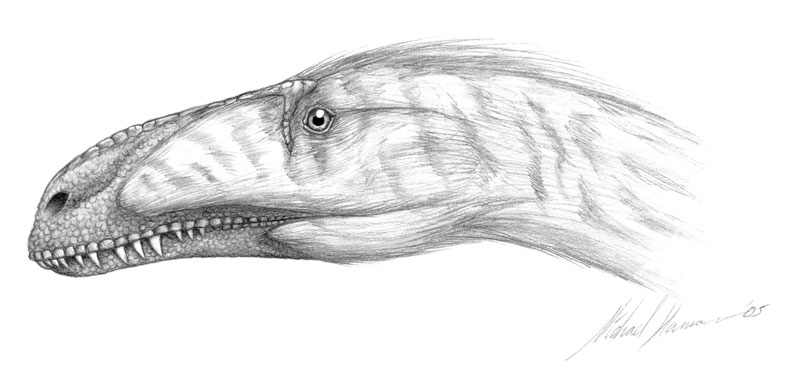




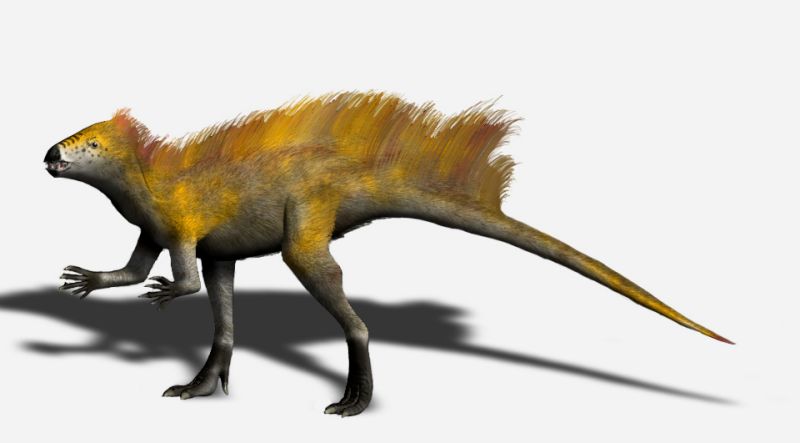



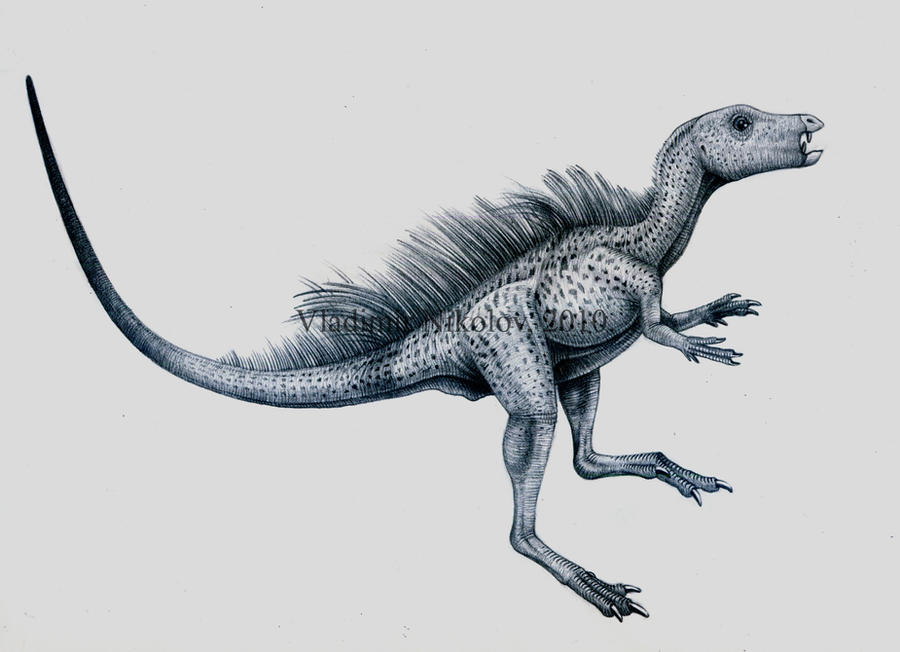


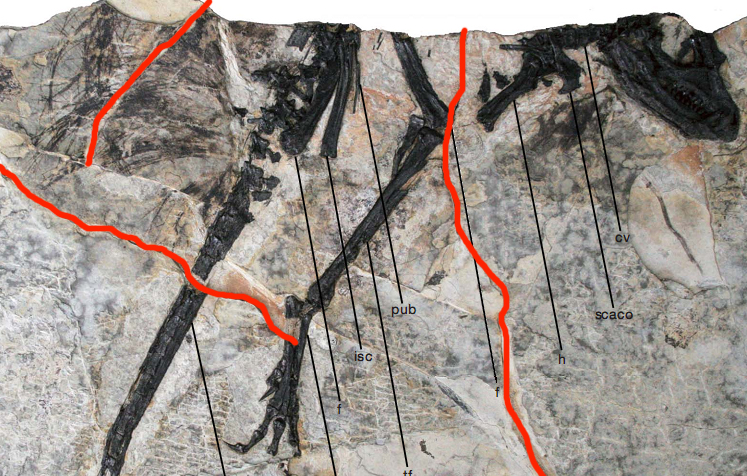
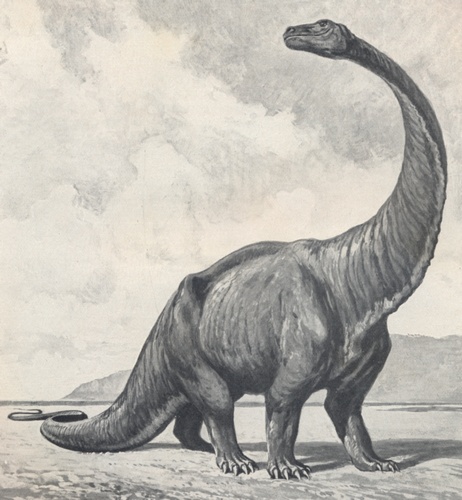







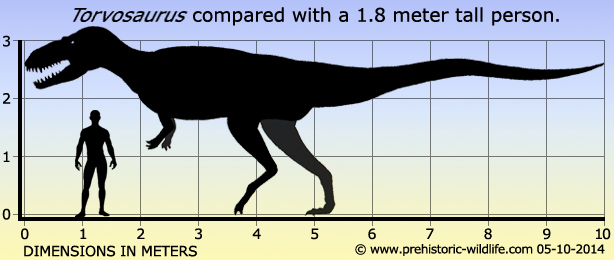



.jpg)
